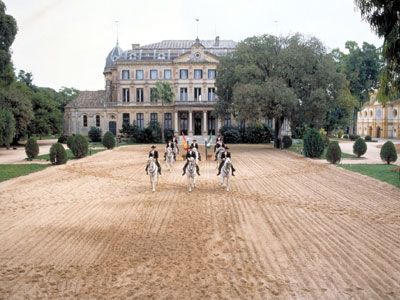
The Andalusian horse is an imposing animal of extraordinary beauty, elegance, balance and harmony. The Andalusian, also known as the Pure Spanish Horse or PRE (Pura Raza Española), is a horse breed from the Iberian Peninsula, where its ancestors have lived for thousands of years. The Andalusian has been recognized as an individual breed since the 15th century, and its conformation has changed very little over the centuries. Throughout its history, it has been known for its prowess as a war horse, and was prized by the nobility. The breed was used as a tool of diplomacy by the Spanish government, and kings across Europe rode and owned Spanish horses.
The Royal Andalusian School of Equestrian Art is the at the heart of Spanish Horse Riding and is located in Jerez de la Frontera, Spain. This school is devoted to developing and maintaining the classical dressage style of Spanish riding.
.jpg)
The baroque and neoclassical style of the buildings and grounds of the Royal Andalusian School gives you the impression that this facility has been in existence for a long time. However, it was as recent as 1973 when King Juan Carlos I awarded Don Alvaro Domecq Romero the “Caballo de Oro” (Golden Horse) trophy in Jerez de la Frontera. This is the most prestigious equestrian trophy awarded annually in Spain in recognition of dedication to, and work carried out in favour of, the horse. In honour of this award, Alvaro Domecq presented his show "How the Andalusian Horses Dance" for the very first time and is now known all over the world thanks to this show, a unique exhibition of horsemanship which both exhibits and summarises the work which the institution has carried out since its establishment.
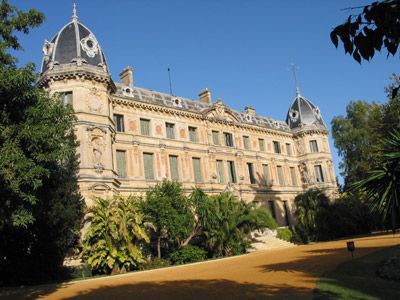
From the remotest of times Andalusia has produced a special communication between Man and the Horse. This is supported by archaeological remains which highlight the importance of the horse in the area of the Guadalquivir River during the times of the Iberians and Tartesians, going on to discover the rather unique game of cañas which horsemen from Jerez played during the Middle Ages as training for war. The violent Renaissance game of Cañas developed and turned into an exhibition of equestrian skills which took place in the central Arenal Square. Although such exhibitions fell into disuse over the years, these skills were kept alive by the garrochistas in the countryside and the rejoneadores in the bull rings. In the 20th Century, the Royal School purified and systemised these traditions, taking as its inspiration the grand European schools such as the Spanish Riding School of Vienna, originally formed with Andalusian horses.
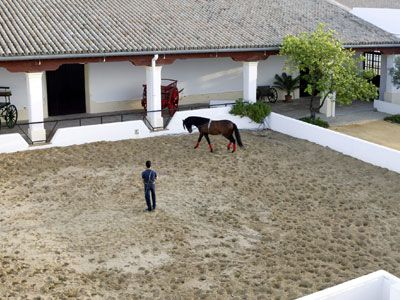
The Royal Andalusian School also boasts an Equestrian Art Museum which invites us to experience first hand the origins and evolution of the equestrian art in Andalusia and the rest of the world, offering the keys which will enable one to fully enjoy their visit with all five senses. Not only the new exhibition rooms, but every single one of the equestrian facilities of the Royal School form a part of the Museum because they all have a part to play in maintaining the equestrian art alive.
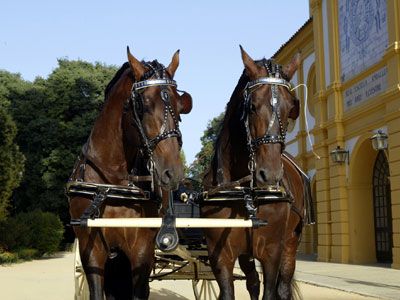
2004 was declared the year of Museums and Intangible Heritage by the International Council of Museums (ICOM). The Museum of Equestrian Arts falls within this category of museum as, though it has many interesting pieces on display, it is really dedicated to the art of riding, its understanding, appreciation, preservation, study and promotion.
Strolling through the Botanical Garden, visitors in the near future will be able to see live Przewalski horses, a breed which is over 12,000 years old and which provides a fundamental link in the evolution of the horse. This species is the only wild horse currently in existence as other technically wild horses, are really cimarrones (descendants of domesticated horses then turned wild).
The Harness Workshop of the Royal School Foundation has been prepared to form an integral part of the museum's facilities, an authentic laboratory of restoration, research and creation of the traditional harnesses that become a second skin for the horse. The Harness Workshop is also a school dedicated to preserving and promoting craft skills which are essential to the equestrian world.
The Palace is where one finds the main interpretative areas which enable you to experience and understand the concept of equestrian arts, and at the same time we marvel at the Recreo de las Cadenas Palace itself. The spectacular living quarters and chapel are open to visitors and also used to house temporary exhibitions and other activities related to the Museum.
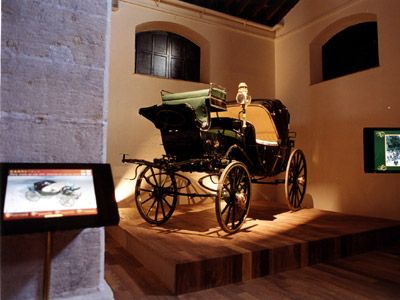
After the Recreo de las Cadenas Palace the tour allows the public to visit the rest of the Royal School's facilities: riding ring, stables, training area, etc… and attend "How the Andalusian Horses Dance" when scheduled, the live performance of equestrian art, and visit the Carriage Museum which also forms a part of the Royal School of Equestrian Art. Here ar a few videos to help you get a feel for this wonderful art if you don't already know it.
---------------------------------------------------------------------------------------------------------------------------------
For your interest here are the details:
ROYAL ANDALUSIAN SCHOOL OF EQUESTRIAN ART FOUNDATION
Address: Avenida Duque de Abrantes, S/N. Palacio Recreo de las Cadenas, 11407, Jerez de la Frontera, Cádiz, Costa de la Luz
Phone: +34 956 31 96 35 ; +34 956 31 80 08
http://www.realescuela.org
SHOW "CÓMO BAILAN LOS CABALLOS ANDALUCES"
Time schedule:
Tuesdays, Thursdays, Fridays (only Fridays in August and September), at 12.00 hours.
Saturdays at 12.00 hours the following dates: 29th June, 20th July, 17th August, 7th September, 12th October, 2nd November and 7th December.
Ticket office timetable: From 09.30 to 11.45 hours.
Prices: From 12 - 27 euros.